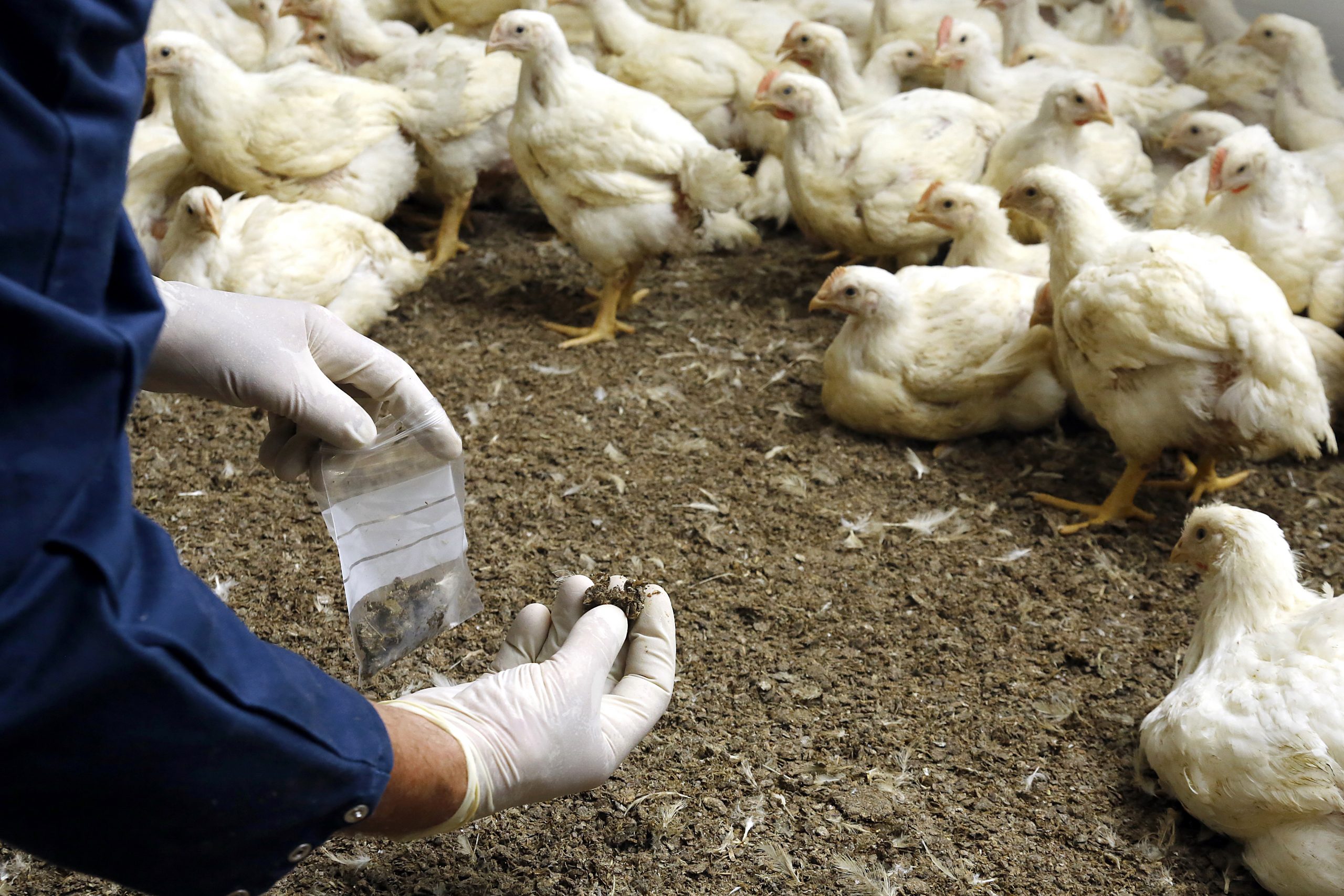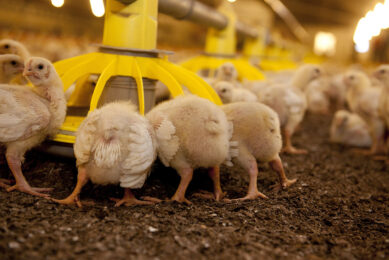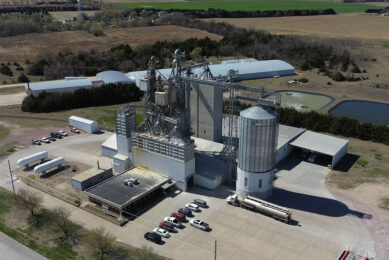The biggest threat of ‘AGP-free’?

At present there are no equivalent replacements for antibiotic growth promoters (AGPs), which might explain the rise of dysbacteriosis within the broiler industry. Butyric acid can support poultry producers in minimising the effect of this performance and economic challenge.
The phasing out of antibiotics as growth promoters from poultry feed recipes has increased the interest for alternative nutritional strategies, for both increasing poultry performance as well as protecting against pathological disturbances. When AGPs were first introduced 50 years ago, their exact mechanism of action was unclear and remained so until their removal from the broiler diets in Europe when their major role in controlling sub-clinical bacterial disease in the digestive tract was discovered. In Norway for example, the ban on AGPs in 1995 was accompanied by a dramatic increase in the incidence of enteritis in poultry flocks within one month, indicating that the AGPs had been effective in controlling enteritis.
Although the exact etiology of dysbacteriosis is unknown, it is believed that both infectious and non-infectious factors play a role. Clinical symptoms associated with the condition are wet faeces, which have a typical orange mucoid appearance along with occasional foamy caecal droppings. There can be a presence of undigested feed particles within the faeces indicating a loss of intestinal function. Other symptoms include growth retardation, a reduction in bird activity, a marginal increase in mortality, decreased feed intake and fluctuations in water consumption. Necropsy will show fragile, thinning and ballooning of the small intestine with foamy intestinal contents and undigested feed in the cloaca.
Though there are no direct diagnostic tests for dysbacteriosis to confirm its occurrence, diagnosis is primarily based on visual examination of the faeces and the condition of the flock, along with fluctuations in water and feed consumption. A macroscopic scoring system developed by a group of Belgian scientists combines the evaluation of coccidiosis and dysbacteriosis. Based on this scoring system, it is common to find a histological increase in T-lymphocyte infiltration in gut mucosa as the dysbacteriosis score increases from a scale of 0 to 10 (0 corresponds to no signs of dysbacteriosis, with 10 being all signs of dysbacteriosis present). Similarly, an increase in dysbacteriosis score also corresponds to increased villi atrophy as well as their fusion in gut mucosa.
The costs of dysbacteriosis
The cost consequences of dysbacteriosis can be categorised into welfare and economic aspects that are often inter-related. When the birds in a broiler house are suffering from dysbacteriosis, litter tends to become wet which often results in hock-burns and foot pad dermatitis lesions due to prolonged contact with the degrading litter. If left unchecked, these conditions can result in painful ulcerations of feet and hocks leading to serious welfare issues and in severe cases, breast wounds can develop due to prolonged periods of resting down time. Illness puts the bird under unnecessary discomfort leading to loss of appetite, reduced growth rates, lower slaughter weights and thus a reduced income for a broiler producer. Ever since the 2006 AGP ban in the European Union, more than 50% of antibiotic treatments given to broilers are because of gut related problems, in particular dysbacteriosis. Experts suggest that poor gut health, often arising due to dysbacteriosis, can potentially cost broiler producers around $0.11 per bird. This is a financial burden that cannot be ignored.
Minimising dysbacteriosis discomfort
In order to keep a check on dysbacteriosis situations, feed additives such as probiotics and prebiotics are being added to influence the production of SCFAs, in particular butyric acid that plays a central role in protecting the intestinal tract integrity. Butyric acid is a naturally occurring SCFA that has many versatile beneficial effects like its anti-inflammatory effect, its influence to speed up the intestinal repair process and stimulating gut villi development. There is a unique way butyric acid acts through a mechanism to prevent infection, namely host defense peptides (HDPs) synthesis, also known as anti-microbial peptides, that are critical components of the innate immunity. They possess broad-spectrum anti-microbial activities and are extremely difficult for pathogens to develop resistance against. Defensins (AvBD9 & AvBD14) and Cathelicidins are the two major families of HDPs found in poultry that get a boost from butyric acid supplementation. In a study supported by the US Department of Agriculture, exogenous administration of butyric acid induces a remarkable increase in HDP gene expression and thus enhances disease resistance ability in chickens. Interestingly, this study observed that HDPs are induced by butyric acid in a dose dependent manner in both the jejunum and caecum.
In order to supplement butyric acid in poultry diets, fat coated salts of sodium or calcium butyrates have been available in the market since the 1990s that comprise of fat coating of up to 70% of the total product weight. The coating masks the pungent smell of the acid to some extent, however end-users do not get the full value for their investments because the butyric acid content in these products is often low.
Health benefits of Tributyrin
Tributyrin (ProPhorce SR) is a pro-drug of butyric acid that allows more molecules of butyric acid to be delivered into the small intestine because of the esterification technique. The concentrations are 2 to 3 times higher than with conventional coated products. Esterification allows three butyric acid molecules to be bound to glycerol which can only be broken by endogenous pancreatic lipase. The product is free of butyric acid odour, does not require any coating and is easy to handle.
Recently, Chinese scientists set up an immunological study to find the beneficial effects of tributyrin on pro-inflammatory cytokines in broilers challenged with LPS (lipopolysaccharide). LPS usage can induce inflammation in studies like this since it activates inflammatory markers such as IL (Interleukins). On days 22, 24, and 26 of the trial, broilers were challenged with an intraperitoneal administration of 500 μg/kg BW LPS or saline. Dietary tributyrin supplementation of 500 mg/ kg inhibited the increase of IL-1β & IL-6 suggesting that its supplementation is able to reduce the release of pro-inflammatory cytokines (Figure 1 and 2) and thus minimise gut inflammation.
Intestinal integrity serves as an important interface between expensive feed raw materials and growth promotion. Butyric acid in particular is recognised as a potent booster of gastrointestinal health that has already been used in animal feed for over 20 years. The product delivers butyric acid in the small intestine and is very effective in impacting intestinal health by speeding up the intestinal repair process, encouraging optimal villi development and modulating the immune reactions in the intestinal tract. Butyric acid is a great tool to support the industry in reducing the negative impact of dysbacteriosis which is surfacing as a result of reduced AGP use.
References available on request
Author: Devendra Verma, Business Development Manager (Gut Health), Perstorp Feed & Food, The Netherlands











